Question: What type of wood is Restore-A-Deck used on?
Answer: Restore-A-Deck is safe for all wood types including pressure-treated pine, cedar, redwood, ipe, and mahogany.
Question: What is in Restore-A-Deck?
Answer: The majority ingredient in the cleaning formula is sodium percarbonate. This is the one recommended by the Western Red Cedar Lumber Association. There is also a blend of proprietary detergents that makes the cleaner work faster and more powerful than just straight sodium percarbonate cleaners. The Restore-A-Deck brightener is a blend of mild acids that is much less harsh on your wood than the straight oxalic acid. These formulas are the exact formulas we use professionally to clean and maintain decks every day. There is nothing comparable on the homeowner market.
Question: Is your product just for wood that has already been stained? My deck was just built.
Answer: Restore-A-Deck can be used for maintenance cleaning, mild stripping, or to prepare new wood for sealer. For general cleaning, you would not allow the product to sit (dwell) for a long time before rinsing. For a more aggressive action, you would let the product dwell for a longer period.
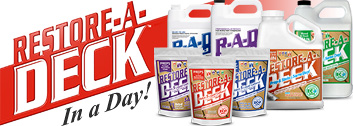


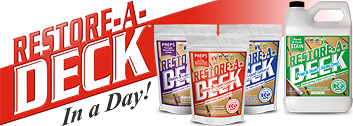

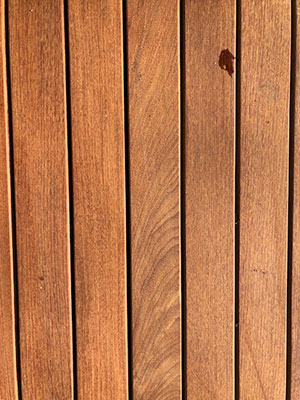
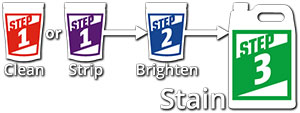
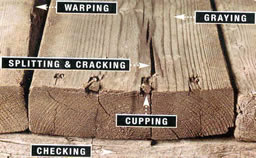
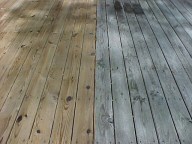 Your wooden deck or fence is a big investment. Properly cleaning it will extend its useful life and make it a source of pride for both you and your family. Whether the wood is pressure-treated, cedar, or ipe, sticking to a scheduled maintenance program will insure your deck stays in top shape. A high-quality cleaner and regular refinishing will protect your investment from the elements.
Your wooden deck or fence is a big investment. Properly cleaning it will extend its useful life and make it a source of pride for both you and your family. Whether the wood is pressure-treated, cedar, or ipe, sticking to a scheduled maintenance program will insure your deck stays in top shape. A high-quality cleaner and regular refinishing will protect your investment from the elements.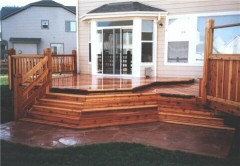 You can choose to hire a RAD certified deck maintenance company to keep your wood looking top notch. While this is the best arrangement, we understand the repeated expense can be a burden. This is why we introduced Restore-A-Deck to the public. With the proper tools, a little know-how, and Restore-A-Deck you’ll be happy to just sit by the window and take pride in knowing your deck is a labor of love.
You can choose to hire a RAD certified deck maintenance company to keep your wood looking top notch. While this is the best arrangement, we understand the repeated expense can be a burden. This is why we introduced Restore-A-Deck to the public. With the proper tools, a little know-how, and Restore-A-Deck you’ll be happy to just sit by the window and take pride in knowing your deck is a labor of love.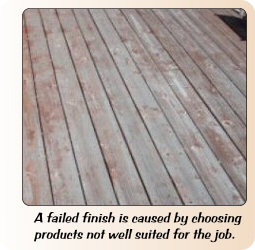 Left unchecked, nature’s assault on a wooden deck will cause it to warp, gray and become a haven for mold growth. Moisture, pollen, and the sun can all wreak havoc on wood. You may have tried to perform maintenance by cleaning and applying a sealer, but with the same end result. Finish failure is a combination of factors. The key to success lies in starting with a thorough deck cleaning.
Left unchecked, nature’s assault on a wooden deck will cause it to warp, gray and become a haven for mold growth. Moisture, pollen, and the sun can all wreak havoc on wood. You may have tried to perform maintenance by cleaning and applying a sealer, but with the same end result. Finish failure is a combination of factors. The key to success lies in starting with a thorough deck cleaning. Most of the deck cleaners you find in home centers are merely inexpensive household bleach (look for the chemical sodium hypochlorite on the label) mixed with a little soap. Examples would be the Olympic pictured left. These products may remove mold or mildew but they do nothing to address removing a failed finish, removing gray or pH balancing a deck to prepare it for staining.
Most of the deck cleaners you find in home centers are merely inexpensive household bleach (look for the chemical sodium hypochlorite on the label) mixed with a little soap. Examples would be the Olympic pictured left. These products may remove mold or mildew but they do nothing to address removing a failed finish, removing gray or pH balancing a deck to prepare it for staining.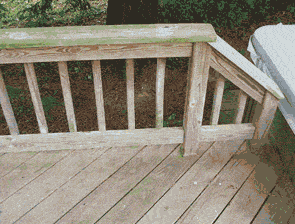 Step-1: Get Rid of the mold, gray, dirt and old finish
Step-1: Get Rid of the mold, gray, dirt and old finish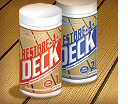 Restore-A-Deck’s Step-1 cleaner takes the concept further. The addition of five other cleaning agents and surfactants work to emulsify any stain that may remain on the deck. RAD’s step-1 will also loosen gray fibers meaning with mild brushing or a
Restore-A-Deck’s Step-1 cleaner takes the concept further. The addition of five other cleaning agents and surfactants work to emulsify any stain that may remain on the deck. RAD’s step-1 will also loosen gray fibers meaning with mild brushing or a  The second part of the process is equally important. This step is what sets a professional preparation apart. The first stage of cleaning will leave the wood in improper pH balance. Prior to staining or sealing the wood should be slightly below neutral (acidic). Mold does not thrive in acidic environments, so this is further insurance against leaving any spores in the wood. Mold is the number one destroyer of deck finishes.
The second part of the process is equally important. This step is what sets a professional preparation apart. The first stage of cleaning will leave the wood in improper pH balance. Prior to staining or sealing the wood should be slightly below neutral (acidic). Mold does not thrive in acidic environments, so this is further insurance against leaving any spores in the wood. Mold is the number one destroyer of deck finishes.